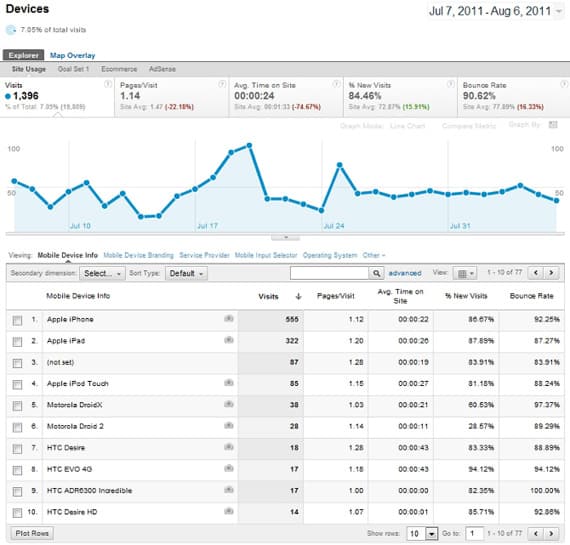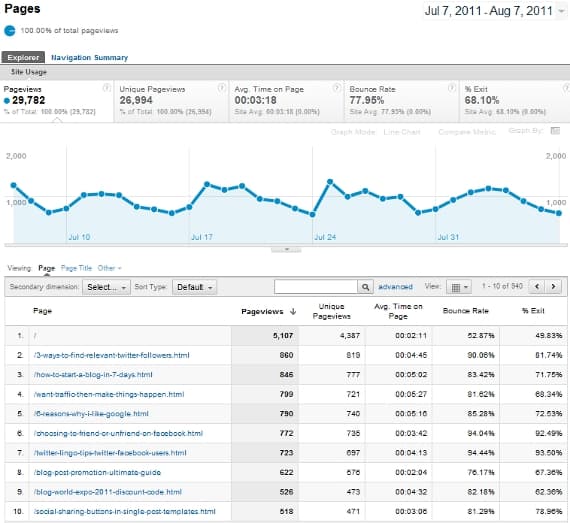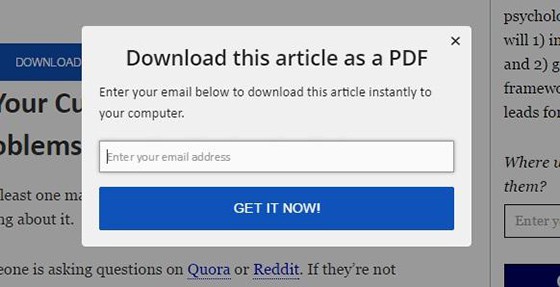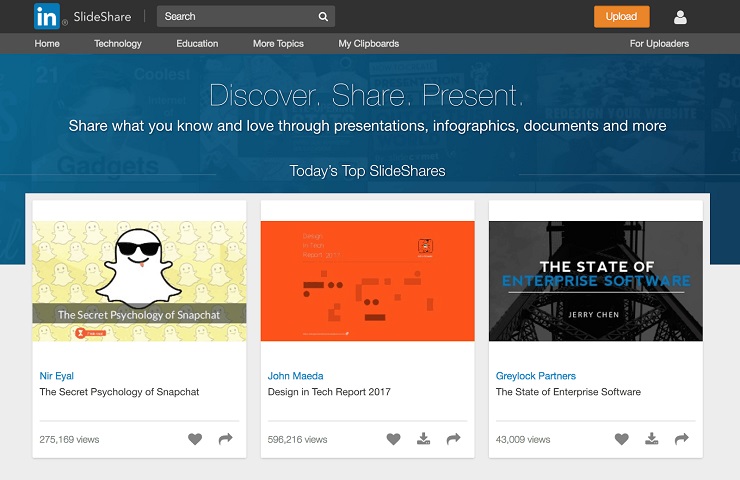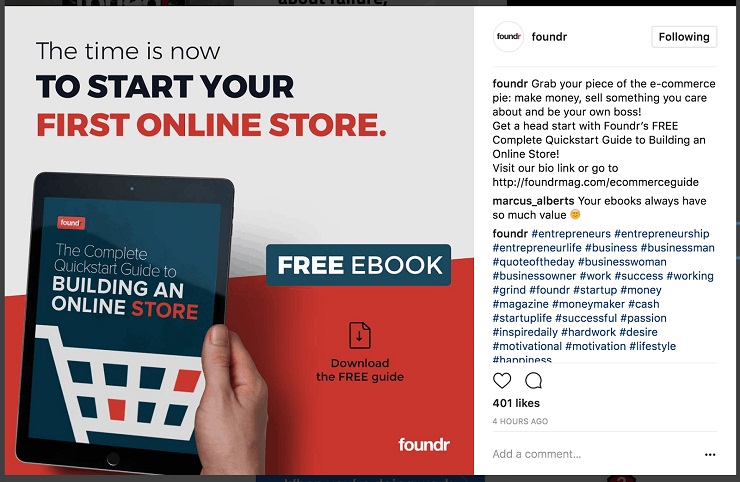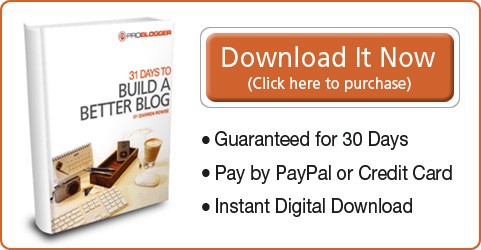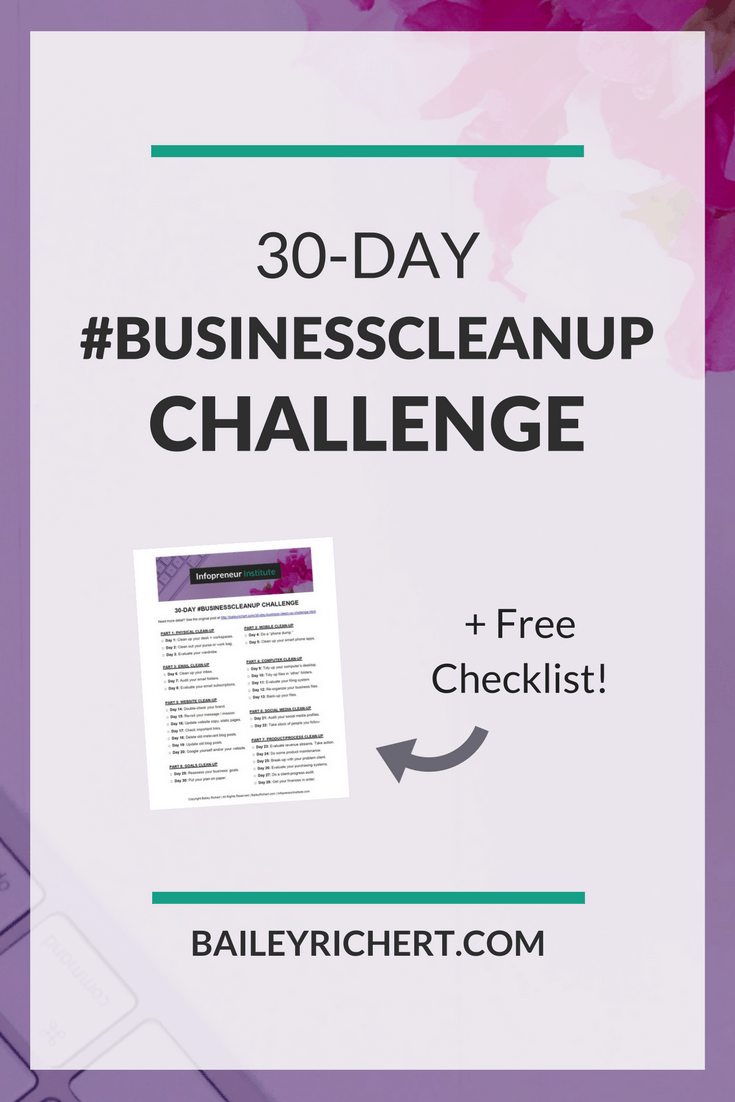Content marketing is hands-down the dominant way to build leads, customers, and ultimately, profits. But the content creation treadmill can be an exhausting exercise for any organization, especially small businesses and up-and-coming entrepreneurs with limited staff and budget.
Fortunately, existing content can be strategically repurposed to not only save you time and money, but also powerfully generate new leads. Here’s how to get two, three, or even four times the benefits from every piece of content you create.
Let’s Face it, Good Content Marketing is Hard
Content is the present and future of marketing. It’s the spearhead of inbound marketing, and it’s a strategy that continues to beat out traditional marketing efforts in both efficiency and effectiveness.
According to Demand Metric, content marketing costs 62% less than traditional marketing and generates about three times as many leads.
So, content marketing should be a given, right?
Not quite. Although more than 90% of organizations use content to market their products and services, almost 70% of marketers lack a consistent content strategy. Why? Well, some commonly cited content marketing challenges include:
- Lack of time and/or bandwidth to create content
- Producing enough content variety and volume
- Producing engaging content
- Measuring content effectiveness
- Developing a consistent content strategy
For these reasons and more, a ton of businesses struggle not only with drumming up new and engaging content, but also keeping those organic traffic numbers moving upwards. Drops and plateaus in traffic are problems every marketer deals with, and can be due to a variety of things, including the relevance, quality, and cadence of your generated content.
Now, before you run off to furiously crank out a bunch new content, listen up: Refreshing and repurposing your old content can breath new life into your marketing strategy.
That’s right. Strategically repurposed content revives your content marketing and does work on your behalf. Repurposing your content can also save you precious time, money, and energy—a few assets we as entrepreneurs don’t always have in abundance.
Derek Halpern, founder of Social Triggers, says it best: “You don’t have to create content, day in, and day out. You just have to work on getting the content you already have … in the hands of more people.”
Here’s a handy infographic you can use that outlines twelve strategic ways to repurpose your content:
Want to display this infographic on your site?
Embed this infographic into your website pages by copying and pasting the code below:
4 Reasons Repurposing Content Pays Off Big
Maybe you’ve got the green light to take your already-created content, spruce it up, and send it on its merry way. But, if the fact that the hard work is already done isn’t enough to get you on board, here are a few more benefits of repurposing your content.
You’ll reach a wider audience
Most people have a favorite type of content consumption. Some prefer podcasts, while others enjoy absorbing information visually through infographics and videos. Some people like learning through online courses, while others like to read up on new information via blog posts and articles. Repackaging your valuable information into different forms of content can boost its consumption rate and reach people who would’ve otherwise never found it.
You’ll reinforce your message
Repetition is crucial in marketing. In fact, the Rule of Seven states that a prospective buyer should hear or see your marketing message seven times before making a purchase decision. Why seven? Well, it’s not the number that’s important, but more about the repetition and consistency; consumers can’t trust a message they’ve simply seen or heard once. Repackaging your content across a variety of channels and media allows your message to repeatedly impact a variety of consumers, increasing the chances of lead conversion.
You’ll lengthen the content’s lifespan
We know you’ve put a ton of work into your content, but sometimes quality and pride aren’t the only indicators of success. A well written blog post can do marketing magic for your business, especially one that gains traction and attracts readers. But, what happens to that blog post and its audience over time? Not too many people revisit something they’ve already read, but the information you’re sharing may still be relevant and sought after. Repackaging your content breathes new life into each piece and gives it a second chance for organic promotion.
You’ll boost lead generation
Some methods of repurposing content involve upgrading or gating the material, meaning that in exchange for access, visitors must input their information or email addresses. This type upgraded content includes webinars, courses, podcast registrations, PDF downloads, and ebooks. Repackaging your otherwise free content into upgraded formats is a surefire way to boost lead generation and potential conversions. That ensures your content will be working for you, not the other way around.
Ask 3 Questions to Decide What Content to Repurpose
You’ve worked hard to create awesome content that’s attracted readers and generated leads. So, how do you decide what content deserves a new life? There’s a strategy for singling out the best content. Here’s what to ask so you know what to repackage.
What’s timeless? In your arsenal of content, there are probably some pieces that are based on current events, holidays, and trends. Go ahead and nix these from your list; for the purpose of repurposing, you’ll want to focus on material that doesn’t have an expiration date. Dubbed “evergreen content” by digital marketers, this content remains relevant long past its publication, meaning that traffic will continue to grow over time. (The graph below shows the visitor activity on one evergreen article throughout two years.)
Repurposing primarily content that is evergreen ensures that it will retain its relevancy and value, regardless of it’s content form or publication date.
What’s popular? To determine this, visit your analytics. We recommend looking at metrics like total pageviews over time, time spent on site, and overall social engagement. Pageviews alert you to what pieces are performing well. Time spent on site indicates which material is attracting and keeping your audience engaged. Social engagement and trending keywords help you recognize what your audience is talking about and what they’re looking for. These indicators will help you establish what content will perform best if repurposed.
What’s useful? Don’t disregard content quality! A post might not be ranked #1 in engagement or page views but still hold valuable information that can be easily repackaged. To determine usefulness, dig into your social shares and post comments. Perhaps a blog post that landed well with a small-but-engaged crowd would be more broadly impactful if delivered via infographic, email drip campaign, or Slideshare.
12 Ways to Strategically Repurpose Your Content
Now it’s time to make your content work for you. Here are 12 powerful ways to leverage one piece of content.
1. Iterate in audio
Podcasts are a powerful way to make use of that in-between or otherwise under-utilized time, e.g. commuting, exercising, or doing laundry. Offering an audio version of your content can help you reach new audiences. Of the 57 million Americans who listen to podcasts, many rely on them as their primary source of new information and learning.
Podcasts are also a great way to bring personality to an otherwise monotonous blog or content stream. Giving your content a voice (literally) can strengthen that authentic, human connection with your readership and consumer base.
Unsure of how to get started? Record your content into an audio blog and add the link to your website. If you’d rather stay behind the computer instead of the mic, check out Fiverr’s listing of professional voice over services.
2. Spread the good word in interviews
Don’t limit your audience to your own blog readers and email list. Tap into more readerships through external interviews and commentary. Featuring yourself and your business on or in another network will leverage the power of cross-promotion and help you access an otherwise untapped market.
Arrange for an influencer or popular podcast host to interview you so that you can share your content in conversation. An easy way to get connected to influencers and journalists is through Help a Reporter Out. HARO provides a trustworthy channel through which sources (i.e. you) can gain valuable media coverage.
I can personally attest to the value of media coverage available via HARO. I connected with a journalist seeking interviews with female millennial business owners, and as a result, my business was featured in Bustle Magazine. Many other small businesses have found major media success through HARO, too.
3. Inform with infographics
Visual content works. *See* for yourself in this infographic about infographics.
Truth is, you can’t be sure of how your audience digests information. Although blogs are a leader in content marketing, most people don’t finish articles they’ve started. We’ve morphed into a readership that skims over content, searching for bullet points and enticing images.
Repackaging your blog posts and written content into visually stimulating infographics will grab the attention of those who would otherwise skim over your content. Use tools like Canva, Piktochart, Venngage, or Infogram to create beautiful graphics for free.
4. Build your list with content upgrades
Take your best performing and most impactful content and transform it into an immortal content offering. Consider this your flagship content—the content that resonates deepest with your overall business offering and purpose.
To upgrade your content is to empower it to work for you. In exchange for a download, encourage people to hand over their emails. There are many useful resources out there to help you create landing pages, build awesome pop-ups, and collect visitor information (Foundr uses LeadPages and LeadBoxes). In this way, your repackaged content will continue to drive new leads long after it’s been published.
5. Spread the love with SlideShare
Slideshows aren’t just for presentations anymore. Slide decks are a great way to offer visual content paired with short text descriptions or data (similar to infographics). Creating a slideshow also forces you to whittle down your content to the main points and one impactful idea. SlideShare gives you the chance to say more with less and keep your content simple, which can be a welcome contrast to a lengthy blog post or video.
There’s an entirely new audience hanging out on LinkedIn and SlideShare, ready to soak up new information. Break up your content into digestible pieces by creating a slide deck presentation, and watch the downloads and comments roll in.
6. Share bite-sized chunks on social media
Social media is a powerful tool for content consumption and can be leveraged in a variety of ways, depending on the type of content and the call to action you’re after. If you want to repackage a list article or statistic-heavy material, use Twitter to share that content. Better yet, add a click to tweet link to some of your most quotable information; this will allow your readers to do the sharing for you and extend your content’s reach.
Have some image-heavy content you’d like to share? Head over to Pinterest or Instagram. These images can serve as powerful teasers for your main content, drawing people to click through to your blog post, content offering, or video.
Don’t disregard social media due to its reputation for browsing and quick consumption. Whittle down your content by sharing tidbits and highlights of your material for sharing on social media. Leverage the character limits to draw interest and boost website visits.
7. Educate with webinars
Webinars are an effective marketing tool that can be leveraged by virtually (get it?) anyone in any industry. Creating and hosting a webinar is not as difficult as it sounds. All you really need is a microphone (check), internet connection (duh), software (read up on our recommendations here), and educational material. And, hey! That’s where content repurposing comes in.
Take your content and repackage it as an instructional webinar. This could be in the form of a slide deck or, if you plan on video chatting live, a set of notes that only you can see. Give your material an educational spin, and engage with your audience through Q&As. Webinars are a prime way to get your content to work for you, by generating new leads and even driving sales.
8. Create valuable courses
Consistent content marketing can boost your authority and help you become the go-to for a certain niche, industry, or audience. If you’re confident that your content has you headed in this direction, consider repackaging your best material into an online course. All material can be educational, depending on how it’s offered. With some editing and additional incentives, you can turn a handful of blog posts, interviews, and other content into a slew of short courses. Tools like Thinkific and Teachable can help you sell your courses, too.
The online learning industry has become somewhat saturated in recent years, but there’s always room for a unique offering. Take a look at your content and see where you can leverage your Unique Value Proposition (UVP). And if your existing content has you on the fast track to building authority and reliability, your audience will find themselves even more willing to invest their time and money in an online course.
9. Break it down into an email series
Ever struggle to come up with something new to drop in your audience’s inbox? While it’s important to keep your emails fresh and timely, it’s okay to use existing content. If you’re featuring an article in your email, focus on one point, then include a “continue reading” link. You can also break down your best (and longest) content into a multi-part email series to keep your readers on their toes.
When repurposing your old content for new emails, remember that you don’t need a lot of content. In fact, 200 words is just enough when issuing a newsletter or update. That means if you’re repurposing your content arsenal into email, avoid the temptation to slap in your favorite 3,000-word blog post. Otherwise, you’ll be saying bye-bye to some subscribers.
To learn more about email marketing and growing an email list, check out this post on how we grew our email list to 250,000 subscribers.
10. Bring it together in an ebook
Amplify your content by publishing an ebook. In this case, you’re offering the same content through a different medium while boosting your authority tenfold. Take your favorite material, spruce it up with additional research, data, and images, add a table of contents and maybe a foreword, and you’ve got yourself a high-value resource.
Similar to upgraded content, high-value pieces can be exchanged for high-value visitor information, such as emails or other data. Repurposing your content into an ebook also increases your chances of selling that information.
Take Darren Rowse, founder of ProBlogger, for example. After receiving raving feedback on his content titled “31 Days to Build a Better Blog,” Rowse repackaged it into an ebook and offered it for $29.99. The book was first released in 2012 and is still on the market today.
11. Run a free challenge
Running a challenge is a great way to boost engagement and build connections with your audience. Have some content that offers great tips or smart advice? Invite your audience to meet whatever goal or challenge you’ve set forth in the article. Not only is a free challenge going to build your email list, but it’s also surefire way to continue securing authority among your readership.
Bailey Richert’s 30-Day #BusinessCleanUp Challenge could’ve easily been a simple list with 30 ways to declutter your physical and digital workspace. Instead, Bailey challenged her audience to not only read her content but also engage with each piece of advice, ultimately earning her new email subscribers and course enrollments.
12. Connect with video
According to a recent Nielsen report, 64% of marketers expect video to dominate their content marketing strategies in the near future. That’s no surprise, given that video is a very measurable and memorable medium. Repurposing your content into video form gives you the chance to add an engaging human element to an otherwise languid literary piece. With video, you can also easily expound on an important topic, using a whiteboard or slide deck for emphasis.
Whether you’re turning a successful webinar into a YouTube video, uploading a photo slideshow onto Vimeo, or holding interview on Instagram or Facebook Live, video is guaranteed to connect with the widest audience.
Conclusion
Content is the future of marketing, and small businesses and entrepreneurs don’t have to miss out because they have low budgets or small staffs. Thankfully, there are many ways to strategically repurpose your content, to flesh out your content marketing strategy and generate new leads.
Content repurposing is also the most efficient way to get the most out of your content. You shouldn’t work hard to develop a beautiful piece of content only to watch it fall into the archives of your blog. Using our strategies above, you can bring otherwise expired material back to life.
Got a favorite piece of content but don’t know what else to do with it? Let us know in the comments below!





